AWS Certified SysOps Administrator - Associate
Domain 5 Networking and Content Delivery
Route 53 Overview
Welcome to this lesson on Amazon Route 53, AWS's robust DNS service. In this session, we will explore how Route 53 provides seamless DNS resolution across various environments including corporate networks, Amazon Virtual Private Clouds (VPCs), and the broader Internet.
When users or systems access services—whether internal or external (including AWS services and general web content)—DNS plays a crucial role by translating human-friendly domain names into IP addresses. While most people unknowingly benefit from DNS every day, IT professionals appreciate its critical role in enabling accurate and efficient name resolution.
Route 53 goes beyond a typical DNS resolver. It also functions as a domain registrar, offers health checking, and facilitates intelligent traffic routing. The following diagram explains how Route 53 links the Internet, custom VPCs, and corporate networks to various AWS services:
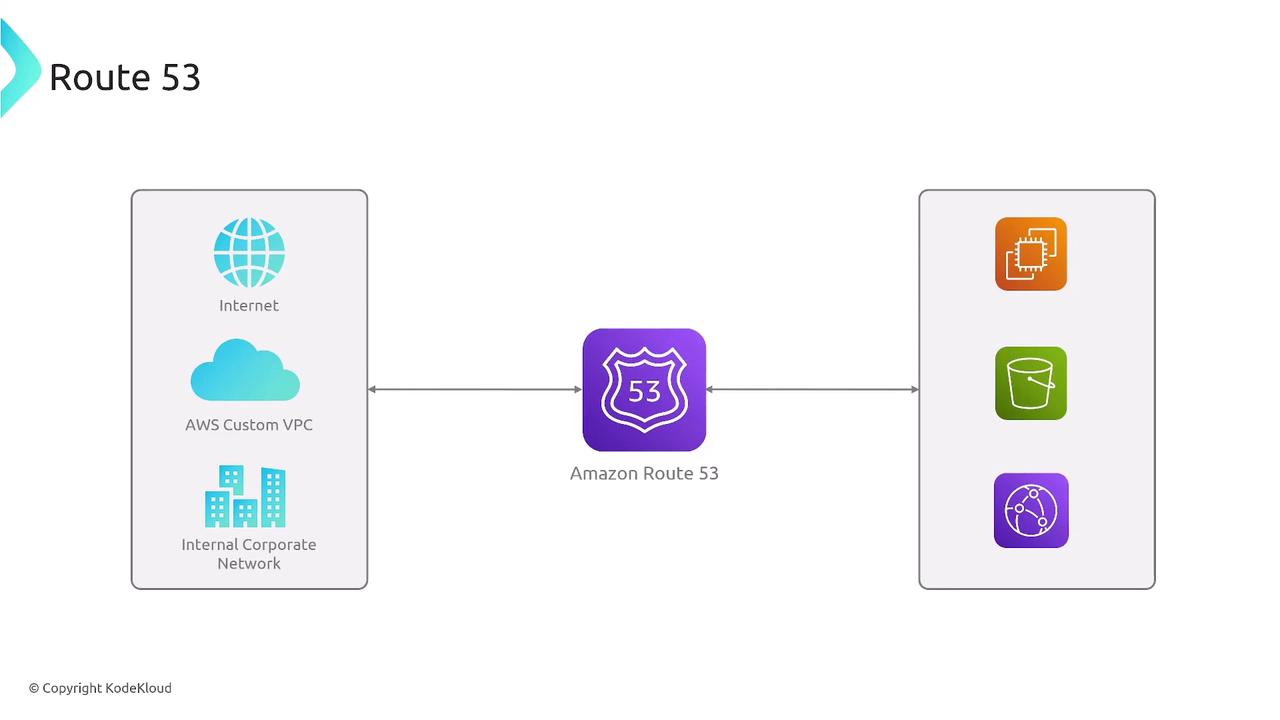
Key Features of Route 53
Route 53 provides three primary features that make it a powerful service for managing your DNS needs:
- Domain Registration: Easily register your domain names.
- DNS Routing: Efficiently resolve domain names to IP addresses using a network of authoritative servers.
- Health Checking: Monitor endpoints to ensure they remain responsive, enhancing the reliability of your services.
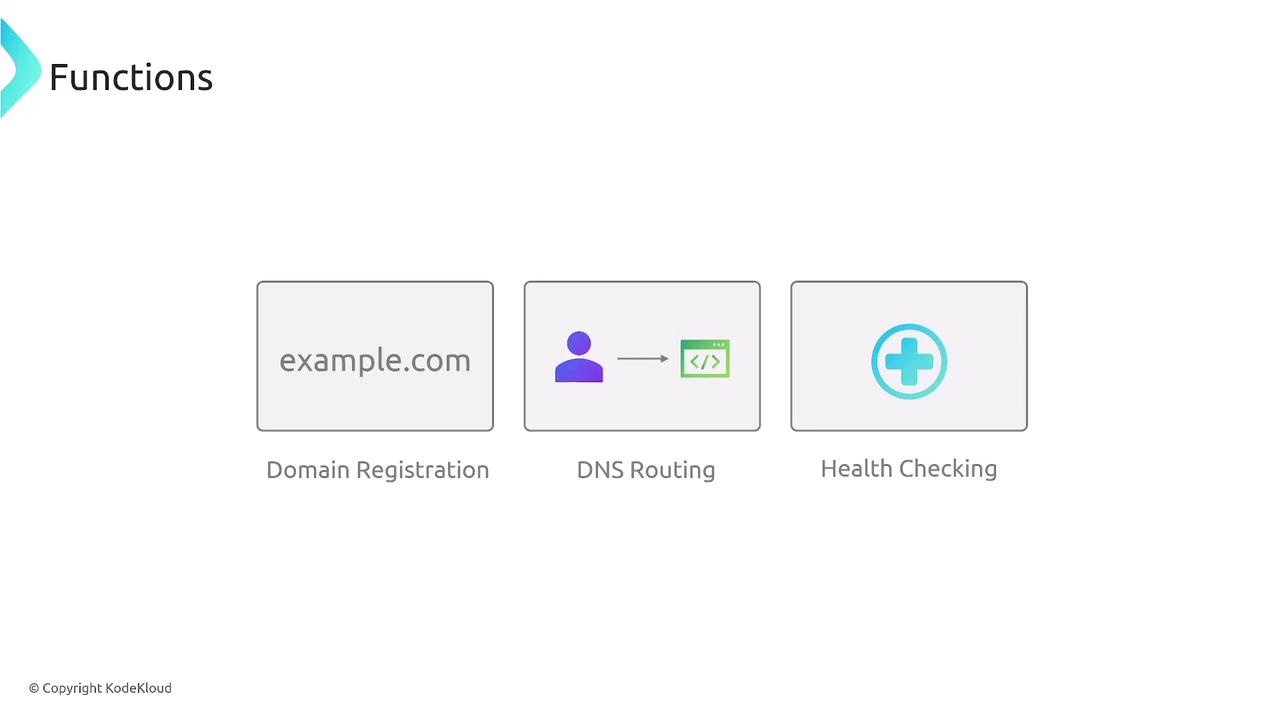
How DNS Resolution Works with Route 53
When a DNS query is initiated, the process follows these steps:
- The resolver contacts a root name server.
- The root name server refers the query to an authoritative name server for the appropriate Top-Level Domain (TLD) such as .com, .io, or .ai.
- The authoritative server returns the corresponding IP address for the requested domain.
This traffic routing process is illustrated in the diagram below:
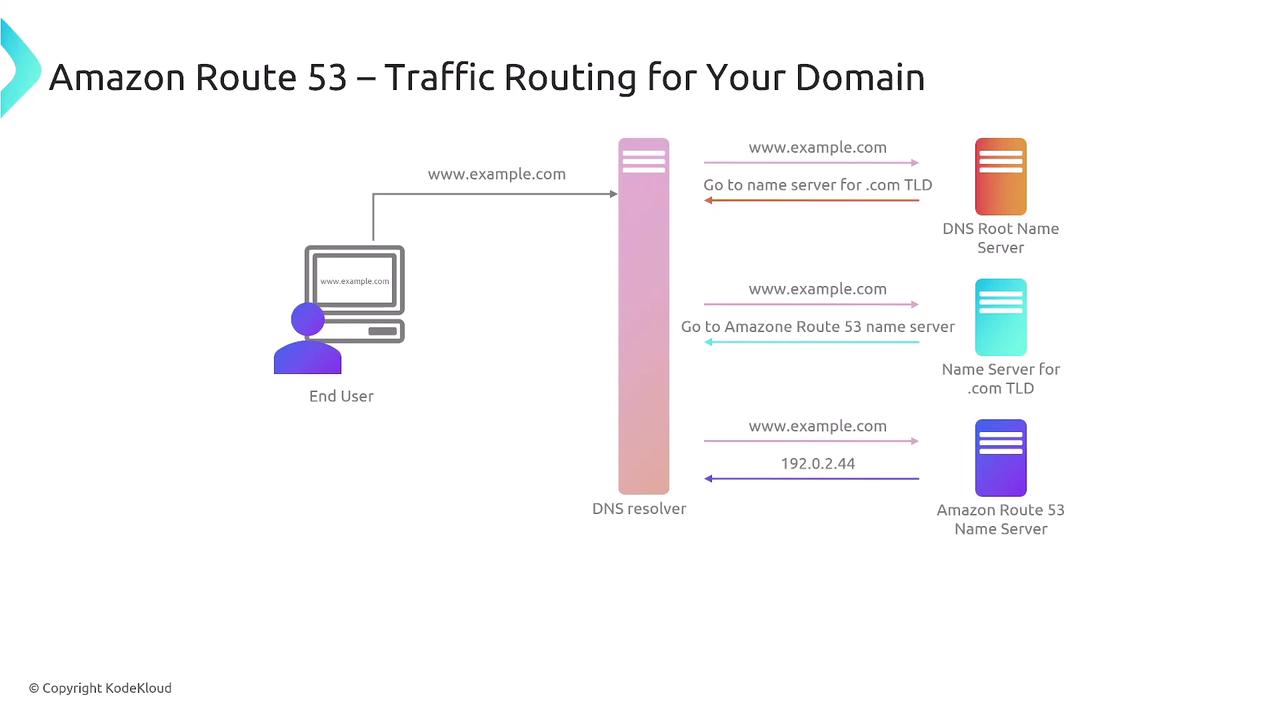
Once the end user receives the IP address, their web request is directed to the designated web server, which responds with the requested web page. This universal DNS resolution mechanism is integral to both global Internet communication and AWS services.
Pricing and Use Cases
Route 53 pricing is based on domain registration, the number of hosted DNS queries, and health check requests. For example, consider hosting a static website on AWS:
- Register your domain using Route 53.
- Create an S3 bucket configured with static website hosting for your root domain.
- Upload your website content.
- Configure the bucket policy to allow public access.
- Create a DNS record in Route 53 that points to your S3 website endpoint.
The following diagram outlines this step-by-step process for using a domain with Amazon S3:
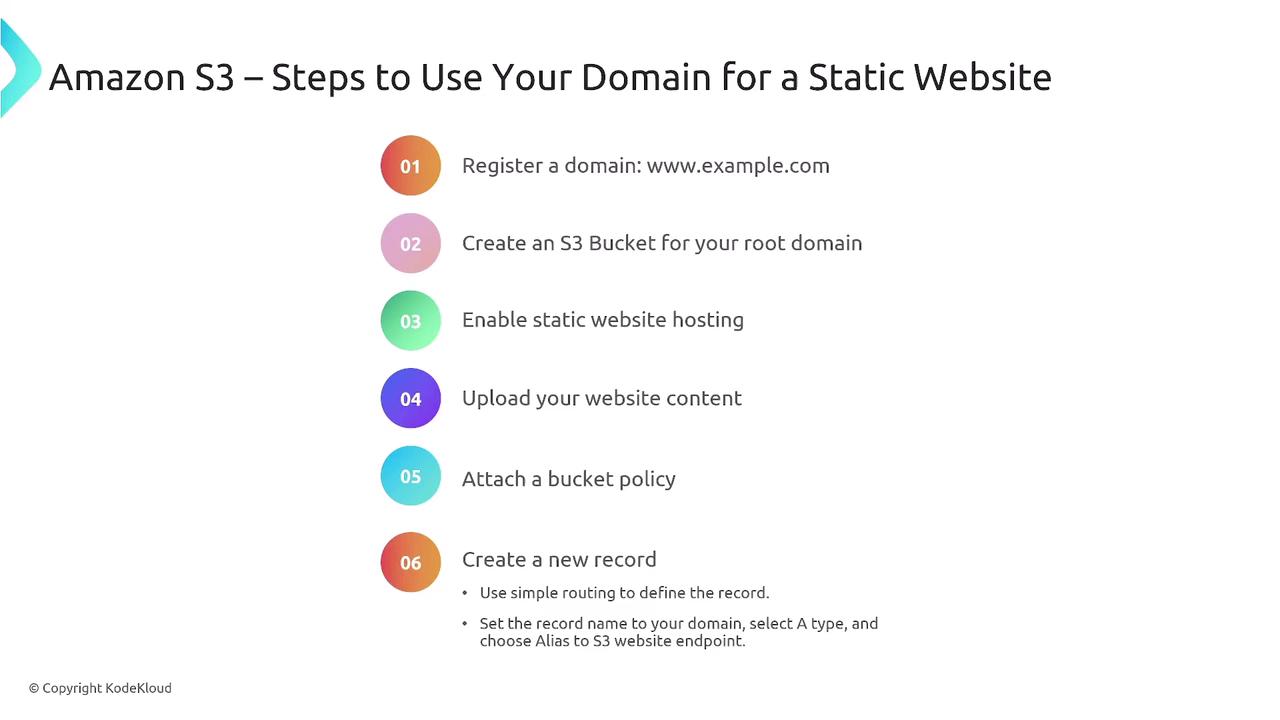
Health Checks and Integration with CloudWatch
For web servers running on EC2 or behind a load balancer, Route 53 can perform health checks. These checks involve sending request-response tests to configurable endpoints. Based on your set parameters—such as request intervals and failure thresholds—Route 53 can trigger Amazon CloudWatch alarms or notifications to alert you if an endpoint becomes unreachable.
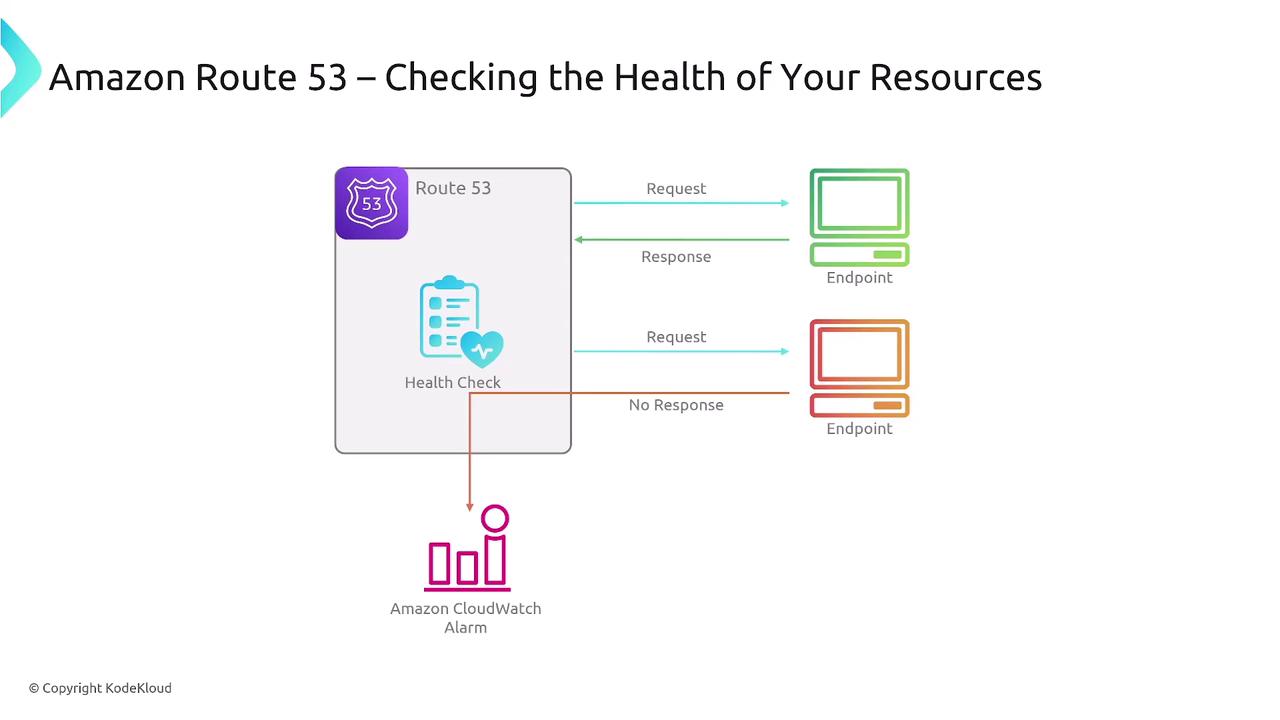
Health Check Parameters
Route 53 health checks can be configured on an IP address, domain name, or a specific port, typically using Layer 7 protocols. The next diagram details parameters such as the request interval and failure threshold.
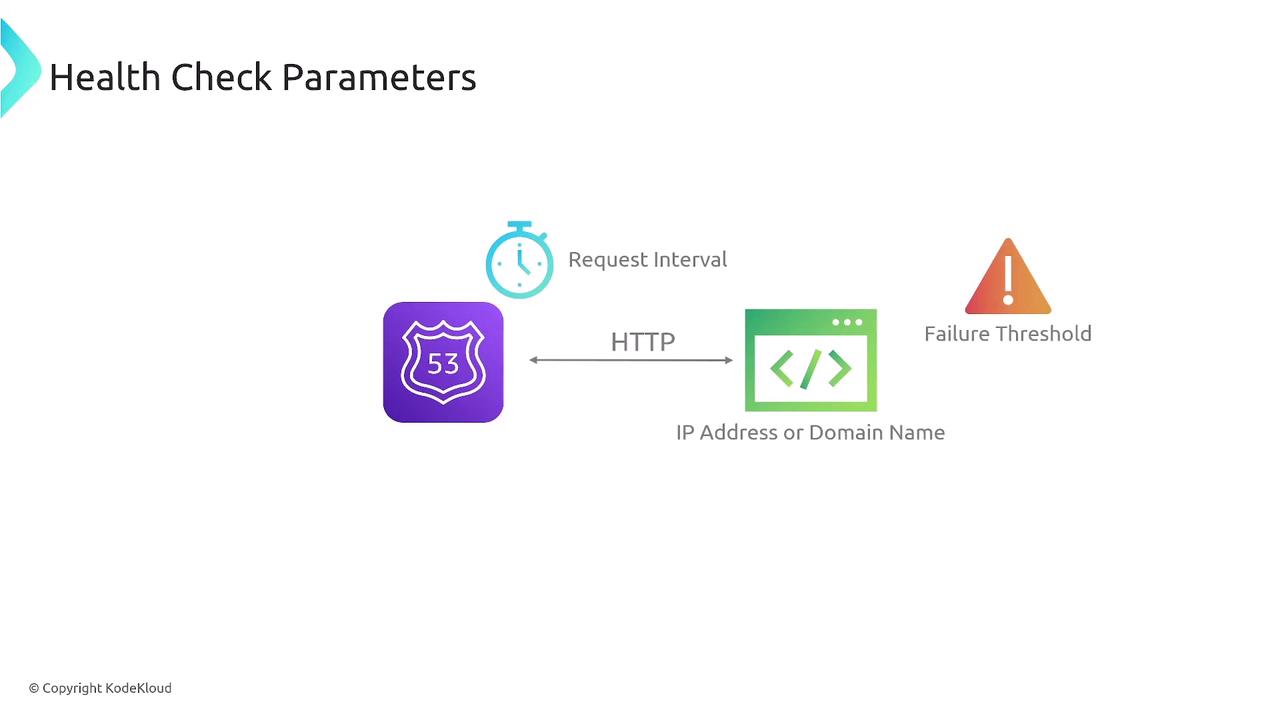
Summary
In summary, Amazon Route 53 is an advanced DNS service that offers:
- Robust traffic routing
- Domain registration capabilities
- Customizable health checks
It supports multiple protocols including HTTP, HTTPS, and TCP, ensuring both the reliability and accessibility of your services.
Further Learning
For more detailed information and best practices on using Route 53, please refer to the AWS Documentation.
Thank you for reading this overview. We look forward to exploring additional AWS topics with you in the next lesson.
Watch Video
Watch video content